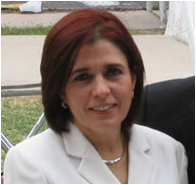In
this Foreign Language Annals article,
Amy Thompson and Amy Fioramonte (University of South Florida) report on their interviews
with teachers of Spanish who are not native speakers. These teachers are often
treated as second-class citizens by colleagues and students. Thompson and
Fioramonte interviewed a number of university teaching assistants, hoping they
would “reveal their experiences as both language learners and teachers by
reflecting on their past and present experiences and imagining their future
selves as teachers.” This article focuses on three of the interviewees who taught
Spanish and had diverse language backgrounds; one was Russian, one Thai (with
Chinese parents), and one English (she grew up in Canada and the U.S.). These
themes emerged from the interviews:
•
Everyone makes mistakes – “Interestingly,
all of the participants commented that making mistakes was acceptable, whether
on the part of the student or on the part of the teacher,” say Thompson and
Fioramonte. One of them said, “I don’t have to know everything. It’s not my job
as a teacher [laugh] to know everything. It’s my job as a teacher to direct
them to the information that they need to get.”
•
Pronunciation – The interviewees said
that speaking like a native was important to them and to their students, and
speaking with a thick non-native accent makes a teacher of Spanish less credible
and effective. But is pronunciation the most important indicator of a teacher’s
competence? ask Thompson and Fioramonte. They believe it’s superficial compared
to knowledge of the language and culture and teaching skill. In addition,
native speakers also make mistakes and some speak with non-normative accents.
•
Teaching advanced classes – All the
interviewees said they were reluctant to teach upper-level Spanish courses
because of their perceived inadequacies. That’s a shame, say Thompson and
Fioramonte: “It is probable that these three participants would, in fact, be
able to teach higher levels of Spanish, but their self-perceived limitations
are preventing them from doing so… Thus, the theme of not being able to teach
higher levels of Spanish potentially comes from a combination of three factors:
self-deprecation or lack of self-confidence, prior language learning
experiences, and the expectations of the students and supervisors in their current
teaching positions.”
What
conclusions flow from these interviews? Thompson and Fioramonte believe the
field needs to move beyond negative stereotypes of non-native speakers and
focus on the more important issues of knowledge of the language and teaching
competence. “Language students should strive to be competent users of the
language, rather than try to achieve the unattainable ‘native-speaker’ status,”
they say. Non-native speakers can be excellent role models in that process. Thompson
and Fioramonte conclude by saying that “bilingualism and multilingualism of
language teachers should be highly valued and emphasized, as bilingual and
multilingual individuals have a heightened metalinguistic awareness when
compared to monolingual teachers…”
